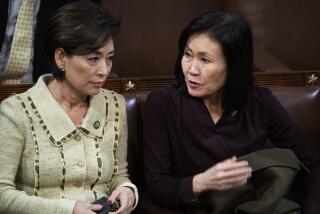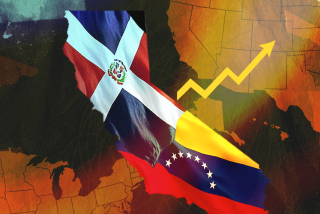Asian population in Orange County surging but doesn’t fit stereotypes, report concludes
In the first-ever study of Asian Americans in Orange County, a new report released by civil rights and advocacy group Asian Americans Advancing Justice-Orange County details the growing assets and continued needs of the county’s fastest growing immigrant group.
Taking aim at the so-called model minority myth and the widespread perception that all Asians are the same, the report, “Transforming Orange County,” which was released at a media event at UC Irvine in January, details the diversity within the Asian American, Native Hawaiian and Pacific Islander population and how these groups are affecting the county in areas such as economic development, education, healthcare, politics and civil rights.
“People always say that Orange County has the third-largest Asian American population in the country, and that Orange County’s population is 20% Asian American,” said Sylvia Kim, regional director for AAAJ-OC. “But what does that really mean?”
The report shows that Asian American, Native Hawaiian and Pacific Islander businesses generated nearly $26 billion in revenue and more than 100,000 jobs for Orange County in 2012 alone, and that Asian Americans and Asian nationals have founded multinational companies that bring in billions of dollars of revenue to the area.
“This is our chance to really make the case that immigrants and refugees do not drain the society — that we are contributors to society,” said Linda Trinh Vo, professor of Asian American Studies at UC Irvine and co-author of the study, at the report’s launch.
The report, based on interviews of Asian American, Native Hawaiian and Pacific Islander community leaders across the county, also offers first-hand insights into the history of Orange County — from housing discrimination against Japanese Americans after World War II to the arrival of Southeast Asian refugees in the 1970s to the proliferation of Asian grocery stores in recent years — and the ways Asian Americans are shaping the present-day culture and politics of the region.
The changes Asian Americans have brought locally also have state and nationwide implications, said Karin Wang, vice president of communications for AAAJ-Los Angeles.
“Orange County has become known — culturally, socially and politically — as the future of California and America,” she said at the launch. “The changes that are happening here are showing the rest of the country where we’re going as a state and as a country.”
At the same time, the study shows that by grouping all Asian Americans together — regardless of ethnicity or immigrant generation — many needs remain invisible.
While Asian Americans in Orange County have a slightly lower poverty rate (12%) than the general population (13%), nearly 20% of Thai Americans are poor in Orange County.
And while Asian Americans as a whole have the lowest unemployment rate in the county — 6.7% compared with 7.6% overall — several subgroups, such as Native Hawaiians and Pacific Islanders, have unemployment rates as high as nearly 13%.
“Disaggregating the data shows that we’re not a homogeneous minority,” Kim said. “When you pick at the data, some Asian ethnic groups are below certain poverty standards than the Latino and black community.”
To remedy these disparities in earning, housing, access to healthcare and civil liberties, the report recommends a series of policy steps, including: breaking down data sets to reveal the true needs of various Asian ethnic communities; linguistically and culturally competent services; enforcing anti-discrimination laws in employment and housing; expanding access to English-learner and bilingual instruction in schools; increasing mental health services for Asian Americans in schools; and hiring a workforce that reflects the growing Asian American presence in Orange County.
“You can’t deny the complexity of our community anymore,” Kim said. “Our recommendation is to not be scared off by it, but to embrace it and go deeper.”
Yoshiko Kandil is a contributor to Times Community News.
More to Read
Start your day right
Sign up for Essential California for news, features and recommendations from the L.A. Times and beyond in your inbox six days a week.
You may occasionally receive promotional content from the Los Angeles Times.






